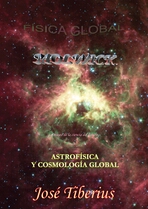A-3. The flower shape of Mercury’s orbit
Mercury's orbit is ellipsoid with anomalous precession or not explained by the numerous factors known before the Theory of Relativity and the classical model of Paul Gerber (20 years before said theory).
The precession of the orbits gives them a distinctive flower shape as their axis rotates.
The mentioned theories almost explained the anomalous precession. However, there are still minor differences with the observed data, which could indicate the possibility of technical improvements to the observations or additional factors.
On the other hand, as shown by the undoubted precision of the mathematical adjustments of Paul Gerber and Einstein's models, another no less important factor is the coherence or not of the physical models proposed. Furthermore, there are other relativistic models and some post-Newtonian models that are more comprehensive than Paul Berger's, such as José Tiberius's Global Physics. ; in particular, in the section The Precession of the Perihelion of Mercury of the book of the Law of Global Gravity.
Regardless of the above, all the models mentioned use the same variables in one way or another, especially kinetic energy, since the result is so specific that it could not be due to chance.

Except for errors in previous analyses, a common theme in all the models cited is that they do not satisfactorily explain the orbital asymmetry of the flower shape.
When talking about elliptical orbits, we commented that with anomalous precession, they would be ellipsoids; but they should remain symmetrical and, consequently, could not have the flower shape.
UMBRELLA aims to propose a parameterized sensitivity analysis of the available data and the possible asymmetries in the kinetic energy derived from the universe's expansion to check if there is an optimal fit that can justify the flower shape, as mentioned above.
In the next section, we comment on the importance of the constant G to collect increases in the force of gravity due to the kinetic energy that affects the entire system studied. In this sense, each system will have its G.
Note that the supposed best fit of the model for kinetic energy asymmetry need not be a consequence of the universe's expansion. To cite a few possibilities, it could also be due to the movement of the Solar System in a galactic reference frame, the galaxy itself in an extragalactic frame, or even related to the direction of the CMB.
In the last section, we analyze the issue related to the universe's expansion of whether galaxies have been formed mainly from supermassive black holes.
